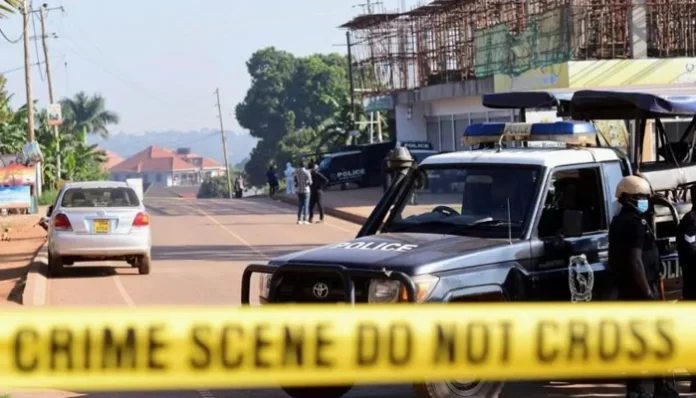
Uganda reels from its deadliest attack in more than 10 years after a rebel group killed 41 civilians, mostly students
Ugandan forces are hunting for rebels accused of killing at least 41 civilians, mostly students, in the worst attack in the country in more than a decade.
Authorities have blamed Friday’s attack in Mpondwe town, near the border with the Democratic Republic of the Congo (DRC), on the Allied Democratic Forces (ADF), a rebel group that has pledged allegiance to ISIL (ISIS).
In his first remarks since the attack, Ugandan President Yoweri Museveni promised to hunt the assailants “into extinction”.
“Their action – the desperate, cowardly, terrorist action – will not save them,” Museveni said in a statement, vowing to deploy more troops on the Ugandan side of the border.
Pope Francis offered a prayer on Sunday for “the young student victims of the brutal attack” that has shocked Uganda and drawn international condemnation.
United Nations Secretary-General Antonio Guterres called it “an appalling act”, while the United States, a close ally of Uganda, and the African Union also condemned the bloodshed.
Here is what we know so far about the worst attack in Uganda since 2010, when 76 people were killed in twin bombings in the capital, Kampala, by the Somalia-based al-Shabab armed group.
What happened?
Most of the victims died when the dormitory of the Lhubiriha Secondary School, located less than 2km (1.2 miles) from the border, was set on fire late on Friday.
Students told Al Jazeera that they were sleeping when suspected ADF fighters forced their way into the school. Some of them were hacked to death, while others were burned alive using petrol bombs. Some students survived by hiding under the bodies of others.
“We were getting ready to sleep when we heard shouting, we saw men wearing dark green clothes with guns, axes and machetes,” said Bright Mumbere, a student.
“They wanted us to open the dormitory door and then started shooting,” he added.
Uganda’s Minister of Education Janet Museveni, who is also the country’s first lady, said 17 male students were burned in their dormitory while 20 female students were hacked to death with machetes.
An unknown number of attackers, believed to be from the ADF armed group based in the eastern DRC, fled towards the Virunga National Park, a vast area that straddles the border, with six students in captivity, authorities said.
Uganda Peoples’ Defence Forces (UPDF) spokesman Felix Kulayigye said armed forces were pursuing the perpetrators to rescue the abducted students.
Questions have been raised about how the attackers managed to evade detection in a border region with a heavy military presence.
Major General Dick Olum said intelligence suggested the presence of the ADF in the area at least two days before the attack, and an investigation would be needed to establish what went wrong.
Families in mourning
Many of the victims were burned beyond recognition, frustrating efforts to identify the dead and account for the missing.
At a mortuary in Bwera, a town near Mpondwe, families were inconsolable as the bodies of their loved ones were placed in coffins and taken away for burial.
Selevest Mapoze, mayor of the town of Mpondwe-Lhubiriha, said “most of the relatives have come to take their bodies” from the morgue.
But for many others, there was no news of missing relatives. The charred unidentified bodies have been sent to the city of Fort Portal for DNA testing.
“We know that 20 of the students, all girls, were hacked to death using machetes, and 17 boys were burned as petrol bombs were thrown in their dormitory,” Al Jazeera’s Catherine Soi, reporting from the Kenyan capital, Nairobi, said.
Who are the ADF?
The ADF, which the US has designated a “terrorist” group, is considered the deadliest of dozens of armed militias that roam mineral-rich eastern DRC. In March, Washington announced a reward of up to $5m for information leading to the capture of the ADF leader.
The ADF was formed in 1995 by a coalition of rebel forces – including the Uganda Muslim Liberation Army and the National Army for the Liberation of Uganda (NALU) – to fight against the rule of Museveni, who has held power in the East African country since 1986.
Over the years, the group was backed by subsequent DRC governments who were keen on subverting Rwandan and Ugandan influence in the country.
But in 2013, the ADF began attacking Congolese military targets, leading the army to fight back. Consequently, ADF leader Jamil Mukulu fled to Tanzania in 2015, where he was arrested and extradited to his home country to stand trial on charges of “terrorism”.
Past ADF attacks
This was not the first attack on a school in Uganda by the ADF. In June 1998, 80 students were burned to death in their dormitories in an ADF attack on Kichwamba Technical Institute near the DRC border. More than 100 students were abducted.
Ugandan authorities also blamed the group for deadly suicide bombings in the capital in 2021, following which it launched a joint military operation in DRC. But the measures have so far failed to stop the ADF attacks.